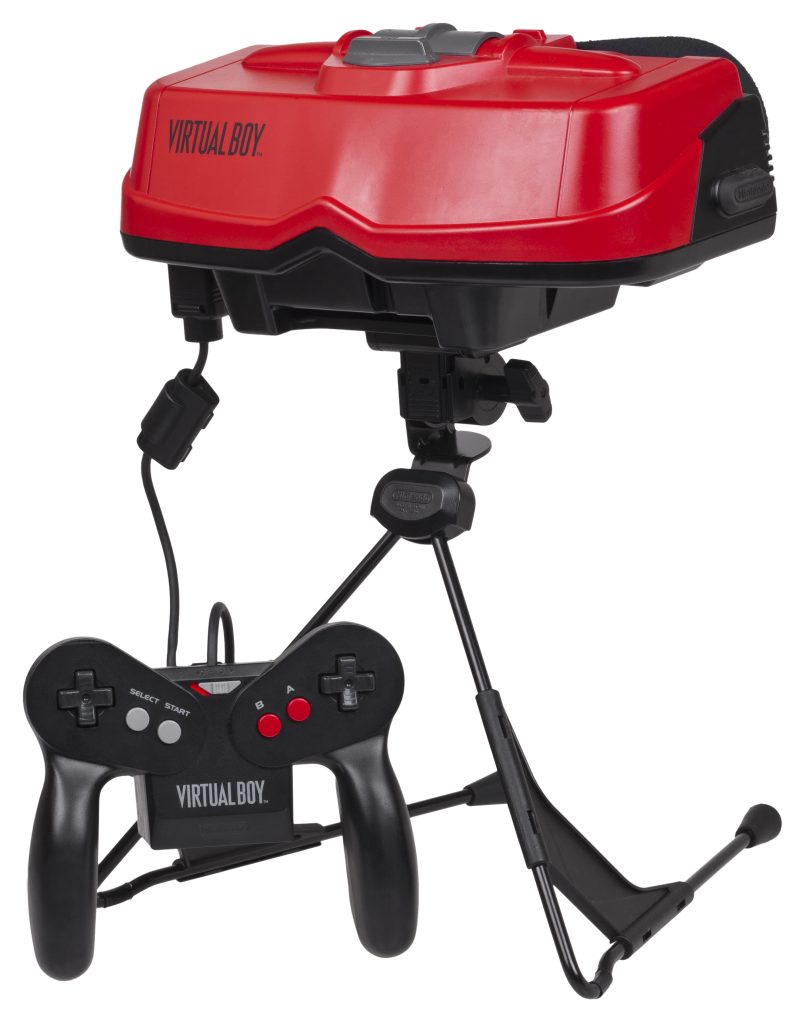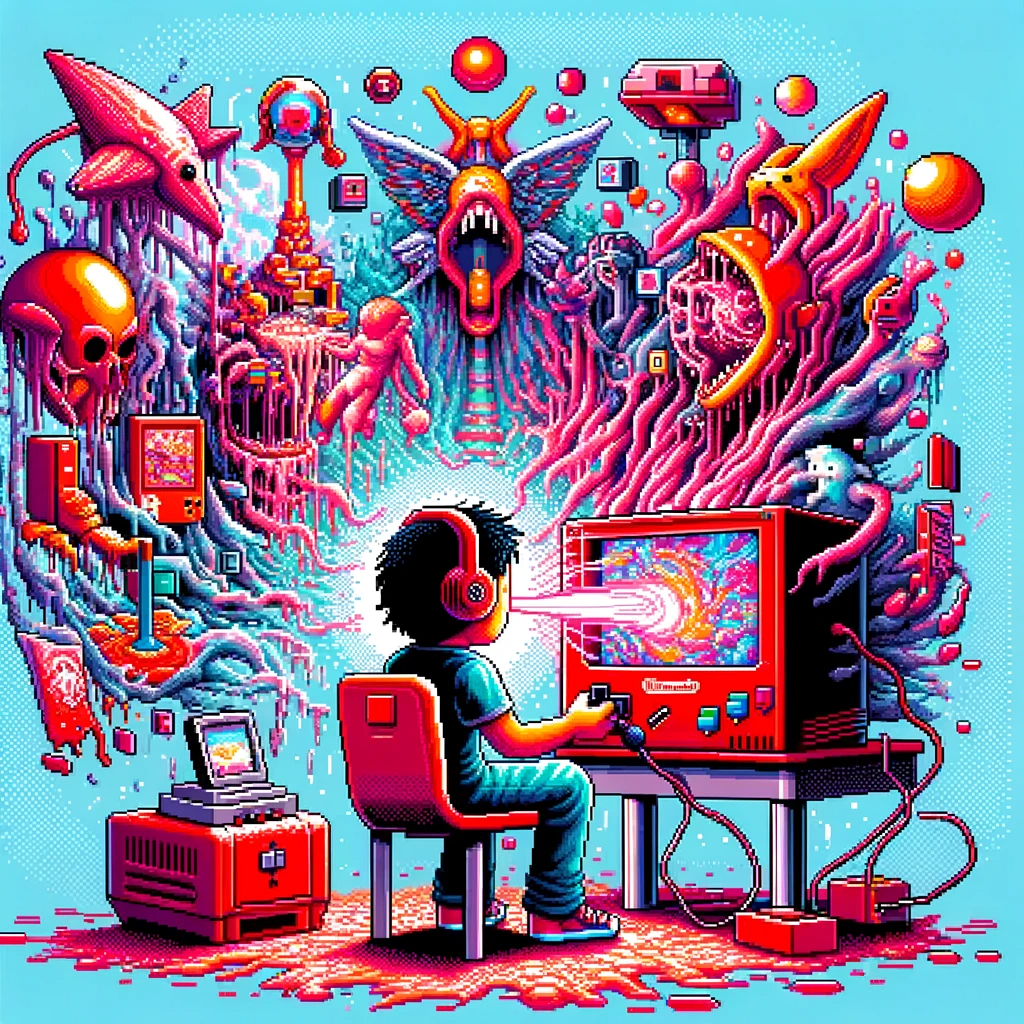The Nintendo Virtual Boy, released in 1995, remains one of the most intriguing mysteries in the history of video gaming. Promising a revolutionary experience, it instead became a symbol of failure in the gaming world. Why did this happen? This article delves into the history, design, and market reception of the Virtual Boy to uncover the reasons behind its downfall.
The Ambitious Beginnings and Rapid Downfall
The Virtual Boy was Nintendo’s audacious step into what seemed like the future of gaming. It promised a unique 3D experience, positioned as a forerunner of virtual reality. However, within less than a year of its release, the Virtual Boy was discontinued, marking it as Nintendo’s worst-selling console.
Design Issues: From Concept to Controversy
Initially envisioned as a set of lightweight goggles, the Virtual Boy morphed into a bulky and unwieldy device. Its design required players to use an awkward table stand, an aspect that contradicted the growing trend towards handheld convenience in gaming. Furthermore, the need to mitigate EMF radiation led to the console being weighed down with metal plates, contributing to its unappealing form factor.
Technological Limitations: A Step Too Far?
Contrary to the high expectations, the Virtual Boy was more akin to an enhanced Game Boy with a stereoscopic display rather than a true virtual reality console. The display, only capable of showing red and black colors, was a significant setback in an era where color displays were becoming the norm. This limitation not only impacted the visual appeal of the games but also raised concerns about eye strain and health issues.
Market Reaction: The Final Nail in the Coffin
The combination of high price, poor ergonomics, and a limited game library led to negative reviews and poor sales. With just 770,000 units sold, the Virtual Boy became a lesson in the risks of technological innovation without adequate market research and consumer understanding.
In summary, the Virtual Boy’s failure was a result of several factors: ambitious yet flawed design, technological limitations, and a disconnect with market expectations. This case study serves as a pivotal lesson in the gaming industry, reminding us of the delicate balance between innovation and practicality.
In the next section, we’ll explore how the Virtual Boy’s legacy has influenced Nintendo’s subsequent ventures and the gaming industry at large.
The Legacy of the Virtual Boy: Lessons Learned
Repercussions for Nintendo
Following the Virtual Boy debacle, Nintendo faced a critical moment. The failure prompted a reevaluation of their approach to hardware design and market strategy. This introspection and learning likely influenced their subsequent successful releases, like the Nintendo DS and Wii, which combined innovation with user-friendly design.
Impact on Virtual Reality Development
The Virtual Boy’s failure served as a cautionary tale in the realm of virtual reality (VR). It highlighted the challenges of pioneering new technology, especially in balancing innovation with user comfort and practicality. Future VR developers took note, focusing on more ergonomic designs and immersive experiences.
Insights into Consumer Behavior
Nintendo’s misstep with the Virtual Boy shed light on the importance of understanding consumer needs and market trends. It reinforced the idea that technological advancement should not come at the cost of user experience. This lesson has since become a cornerstone in product development strategies across the tech industry.
Preserving Gaming History
Despite its failure, the Virtual Boy holds a unique place in gaming history. It’s a reminder of the risks and rewards associated with pushing the boundaries of technology. Preservation efforts for the Virtual Boy, such as museum exhibits and collector communities, continue to keep its memory alive.
Evolution in the Wrong Direction
The Virtual Boy’s story is a rich tapestry of ambition, innovation, and learning. It stands as a testament to the ever-evolving nature of technology and the gaming industry. As we move forward, the lessons gleaned from the Virtual Boy continue to inform and inspire future technological ventures.

Analyzing the Virtual Boy’s Design and Technological Flaws
Design Flaws: The Ergonomic Nightmare
One of the primary criticisms of the Virtual Boy was its design. Originally intended to be a pair of lightweight goggles, it evolved into a bulky headset that required a stand for support. This design was not only uncomfortable but also counterintuitive to the concept of portability in gaming. Additionally, the need to protect users from EMF radiation resulted in the inclusion of metal plates, further increasing its weight and awkwardness.
Visual Limitations: Red and Black Palette
A significant technological limitation of the Virtual Boy was its display, which was capable of showing only red and black colors. This monochromatic scheme, chosen for cost and technical reasons, was unappealing compared to the full-color displays offered by competitors. Moreover, the stereoscopic effect, while innovative, led to concerns about eye strain and discomfort, further detracting from the user experience.
Lack of Game Library and Support
Another major factor contributing to the Virtual Boy’s downfall was its limited game library. With only a handful of titles released, there was a lack of variety and depth in the gaming options available. This scarcity of content, combined with the device’s high price, made it a less attractive option for gamers.
Technical Hurdles: Overpromising and Underdelivering
The Virtual Boy promised a revolutionary 3D experience but failed to deliver. The technology at the time was not advanced enough to provide the immersive experience that Nintendo envisioned. This gap between expectation and reality played a significant role in the console’s failure.
A Confluence of Missteps
The failure of the Virtual Boy was not due to a single flaw but a combination of several misjudgments in design, technology, and market strategy. These elements, when combined, created a product that was ahead of its time in vision but behind in execution.
In the final part of this article, we will explore how the lessons from the Virtual Boy have been applied in modern gaming and technology, highlighting the progress made since its release.
From Virtual Boy to Modern Gaming: Evolution and Lessons
Technological Evolution in Gaming
Since the Virtual Boy, there has been a significant evolution in gaming technology. Modern VR headsets, like the Oculus Rift and HTC Vive, have successfully realized the dream of immersive 3D gaming, addressing many of the issues that plagued the Virtual Boy. These advancements in technology have led to more comfortable, visually stunning, and engaging VR experiences.
User-Centric Design Philosophy
One of the biggest lessons from the Virtual Boy is the importance of user-centric design. Current gaming consoles and VR headsets prioritize user comfort, ease of use, and accessibility. This shift in design philosophy ensures that technology serves the needs and desires of its users, rather than the other way around.
Diverse and Rich Game Libraries
Today’s gaming platforms boast extensive and diverse game libraries, addressing one of the critical shortcomings of the Virtual Boy. The availability of a wide range of titles caters to different tastes and preferences, making gaming more inclusive and appealing to a broader audience.
Learning from Failure: Innovation with Caution
The Virtual Boy’s story has taught the tech world the value of balancing innovation with feasibility and market readiness. While pushing the boundaries is essential, it is equally important to ensure that new technologies are user-friendly and meet market demands.
A Legacy of Learning and Growth
The Virtual Boy, despite its failure, has left an indelible mark on the gaming industry. It serves as a powerful reminder of the challenges and opportunities in technological innovation. The lessons learned from its missteps have been instrumental in shaping the future of gaming and tech development, leading to the dynamic and thriving industry we see today.
